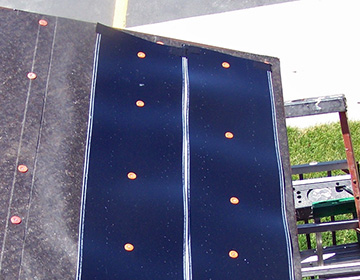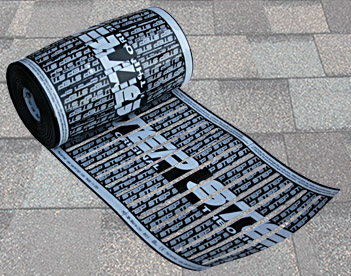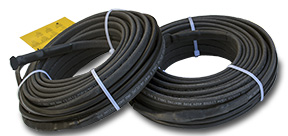Low-Voltage, Self-Regulating Roof Heating Systems
As we emerge from another brutal winter, we see a wake of water damaged structures and compromised roofs. Heavy snowfall in the Northeastern United States was responsible for countless numbers of damaged roofs as well as personal injuries. With future winters predicted to continue to produce extreme snowfall, many of those who are repairing their roofs now are looking to install a roof deicing system. Even those who escaped this winter unscathed are exploring their roof heating options in an attempt to protect their roofs from future storms.
ProLine Radiant offers one of the most advanced roof heating solutions that has quickly become a favorite among professional roofers. ProLine’s low-voltage roof heating system has proven to be an ideal solution for keeping roof valleys and edges clear of ice and snow, preventing costly ice dams from forming.

Roof edges and eaves do not have any heat warming the roof from below, so they’re much colder and prone to ice buildup from snow melting higher on the roof. As heat escapes from the attic and melts snow high on the roof, the water runs down and refreezes when it reaches the colder eaves, creating an ice dam that forces more water to pool up behind it. With nowhere to go, the water eventually seeps through the decking during the day and refreezes again at night, expanding small cracks. The water gradually works its way down onto ceilings and walls, resulting in costly water damage and mold.
Unlike other radiant heating options, the heating element for ProLine’s low-voltage system features a thin self-regulating, semi-conductive polymer heating element. This flexible heating element is polypropylene fused during fabrication to achieve water proofing and protection from alkaline or salt damage, and can be mounted discreetly under the shingles to provide roof heating to roof valleys, edges and trouble spots.
Because the polymer heating element can be nailed/stapled and cut on site, it’s easy to work with and install. This speeds up the installation time and reduces costs.

These fully automated roof heating systems feature an activation device/snow sensor that detects precipitation and temperature. When conditions warrant, the sensor signals the controller when then sends power to the heating element to heat your roof.
Installing a ProLine roof deicing system can preserve and protect a new roof installation from snow and ice buildup for years to come. Besides saving consumers money, ProLine’s self-regulating, low-voltage roof deicing systems can save homeowners the time and effort of having to manually remove snow and ice.
ProLine Radiant also includes professional design/layout services and installation support with each roof heating system. Installers can also take advantage of ProLine’s free installation training. Contact a ProLine representative today to learn more about your radiant heating options (866.676.9276).
Self-Regulating Heat Cable – A Proven Winner
Industry Leading Gutter Melt Systems Feature ProLine’s Self-Regulating Heat Cable
Heavy snow and ice results in costly roof and gutter damage every year. Keeping gutters and downspouts clear of ice helps to facilitate runoff and protect roofs, which dramatically reduces the chance of water damage to homes and businesses.
Ice dams are the most costly and common problems associated with roof and water damage. Heat rises from the house and into the attic, warming the roof. This causes the bottom layer of snow to melt and trickle down towards the roof’s edge. Because the eaves hang over the house, there is no warmth, causing the water to refreeze and form an ice dam near the roof’s edge. When additional snow up higher on the roof melts, the water trickles down and begins to pool up behind the newly formed ice. Soon, a considerable pool of water has formed.

This water repeats the freezing and thawing process, which can ultimately damage the roof. Water seeps into small cracks and then expands when it refreezes at night. Eventually the integrity of the roof is compromised and water can find its way into the house. This ultimately can lead to costly water damage and even mold and mildew growth.
Placing self-regulating heat cable along the roof’s edge and in trouble spots can eliminate this problem. ProLine heat cable is also the ideal solution for keeping gutters and downspouts free of snow and ice, facilitating runoff.
ProLine’s self-regulating heat cable is among the best in its class. When compared to other leading brands, ProLine cable is more flexible and can be installed in lower temperatures. When other heat cable is bent at a radius of 2 inches, the outer jacket tends to pucker and pull away from the cable core. This can lead to cable failure. ProLine’s outer jacket is more flexible and does not pull away from the core, even at a tighter bend radius of 1½ inches.
For quality roof gutter melt solutions, deal with the experts at ProLine. In addition to providing superior products, ProLine also includes installation support and professional design and layout services with each system.
ProLine also offers free installation training courses. Contact ProLine today to learn more about our products or free training (866.676.9276).
